UPSC Mains Answer PYQ 2024: Psychology Paper 1 (Section- B) | Psychology for UPSC Optional (Notes) PDF Download
Question 5
Answer the following questions in about 150 words each:
(a) Citing research evidence, explain the components of working memory.
Ans: Working memory is a system responsible for temporarily holding and manipulating information required for complex tasks such as learning, reasoning, and comprehension. Alan Baddeley and Graham Hitch (1974) proposed a multicomponent model of working memory, later revised by Baddeley (2000) to include four components:
Central Executive: The control system that directs attention and coordinates information from other subsystems. It is modality-free and is involved in decision-making, task switching, and inhibition.
Phonological Loop: Deals with verbal and auditory information. It consists of:
Phonological store (inner ear) – holds speech-based information.
Articulatory rehearsal process (inner voice) – maintains information through subvocal repetition.
Visuo-Spatial Sketchpad: Handles visual and spatial information, helping in tasks like navigation or picturing objects.
Episodic Buffer (added later): Integrates information from the phonological loop, visuo-spatial sketchpad, and long-term memory into coherent episodes.
Research using dual-task paradigms and neuroimaging (e.g., PET and fMRI) supports the existence of these components. For instance, different brain regions are activated for verbal vs. visual tasks, suggesting domain-specific subsystems.
(b) What are the main differences between James-Lange and Cannon-Bard theories of emotion? Explain.
Ans: The James-Lange theory and Cannon-Bard theory are two early explanations of how emotions are experienced, but they differ significantly in terms of sequence and mechanisms.
James-Lange Theory: Proposed by William James and Carl Lange, it suggests that emotion arises from physiological responses to external stimuli. According to this theory:
Stimulus → Physiological response → Emotion
Example: You see a snake → your heart races → you feel fear.
This theory implies that each emotion has a unique physiological pattern. However, critics argue that emotions can occur too quickly for distinct bodily changes to precede them.
Cannon-Bard Theory: Proposed by Walter Cannon and Philip Bard, it posits that emotion and physiological response occur simultaneously but independently.
Stimulus → Thalamus → Simultaneous emotional experience and bodily reaction.
Example: You see a snake → your thalamus triggers fear and heart rate at the same time.
Cannon and Bard argued that visceral changes are too slow and similar across emotions to be the primary cause of emotion. Neurophysiological studies support this by showing the thalamus as central to emotional processing.
(c) Differentiate between intelligence and aptitude. Also, discuss the main features of a good intelligence test.
Ans: Intelligence refers to a general mental ability to reason, solve problems, think abstractly, and learn from experience. It is a broad and stable trait encompassing multiple cognitive abilities.
Aptitude, on the other hand, is a specific ability or potential to learn a skill or perform a task. Aptitude tests often predict future success in particular fields such as music, engineering, or language.
Key Differences:
Intelligence is general; aptitude is specific.
Intelligence tests measure overall cognitive abilities, while aptitude tests assess potential in a targeted area.
Intelligence is relatively stable; aptitude may vary with training.
Features of a good intelligence test:
Standardization: Administered under uniform procedures with established norms.
Reliability: Produces consistent results over time or across different raters.
Validity: Measures what it claims to measure (construct and predictive validity).
Objectivity: Free from examiner’s personal bias.
Practicality: Easy to administer, score, and interpret.
Cultural Fairness: Minimizes language and cultural bias, especially important in a diverse country like India.
Examples of good intelligence tests include the Stanford-Binet and Wechsler scales, both widely used across cultures.
(d) Describe the biological and socio-cultural determinants of personality. Illustrate your answer with the help of Indian studies.
Ans: Personality is shaped by a complex interplay of biological and socio-cultural factors.
Biological determinants:
Genetic inheritance: Twin and adoption studies show a significant hereditary component in traits such as extraversion and neuroticism.
Neurophysiology: Eysenck linked introversion to higher cortical arousal levels.
Hormonal influences: Testosterone is associated with aggression, and cortisol with stress reactivity.
Socio-cultural determinants:
Family environment: Parenting style, attachment, and sibling dynamics influence traits like self-esteem and conscientiousness.
Culture and traditions: Indian collectivist culture promotes traits such as conformity, interdependence, and respect for hierarchy.
Education and social norms: Access to education and peer groups also shape personality, especially openness and agreeableness.
Indian research examples:
Durganand Sinha highlighted how Indian joint family systems influence traits like obedience and social harmony.
NCERT studies on tribal vs. urban children showed significant differences in assertiveness and achievement motivation due to cultural contexts.
R.C. Tripathi explored the role of caste and social identity in shaping personality patterns related to self-concept and social participation.
Thus, both nature and nurture interact to shape personality, with socio-cultural settings often amplifying or moderating biological predispositions.
(e) Is cognitive dissonance effective in changing attitude? Discuss in the light of research evidence.
Ans: Cognitive dissonance, a theory proposed by Leon Festinger (1957), refers to the discomfort experienced when a person holds two conflicting cognitions or when behavior and belief are inconsistent. To reduce this discomfort, individuals often change their attitudes.
Effectiveness in attitude change:
- When individuals engage in behavior contrary to their attitudes but cannot justify it externally, they are motivated to change their internal beliefs to restore harmony.
- For example, in Festinger and Carlsmith’s (1959) classic study, participants paid only $1 to lie about a boring task rated it more positively than those paid $20. The insufficient reward led to greater dissonance and thus attitude change.
Applications:
- Used in health campaigns: Smokers aware of health risks may change attitudes or quit smoking to reduce dissonance.
- Promotes pro-environmental behavior: When people identify as environmentally conscious but waste resources, dissonance can lead to behavior change.
However, effectiveness depends on:
- Degree of inconsistency.
- Perceived choice and responsibility.
- Importance of the attitude.
In conclusion, cognitive dissonance is a powerful motivator of attitude change, supported by extensive experimental evidence, but its effect may vary depending on context and individual differences.
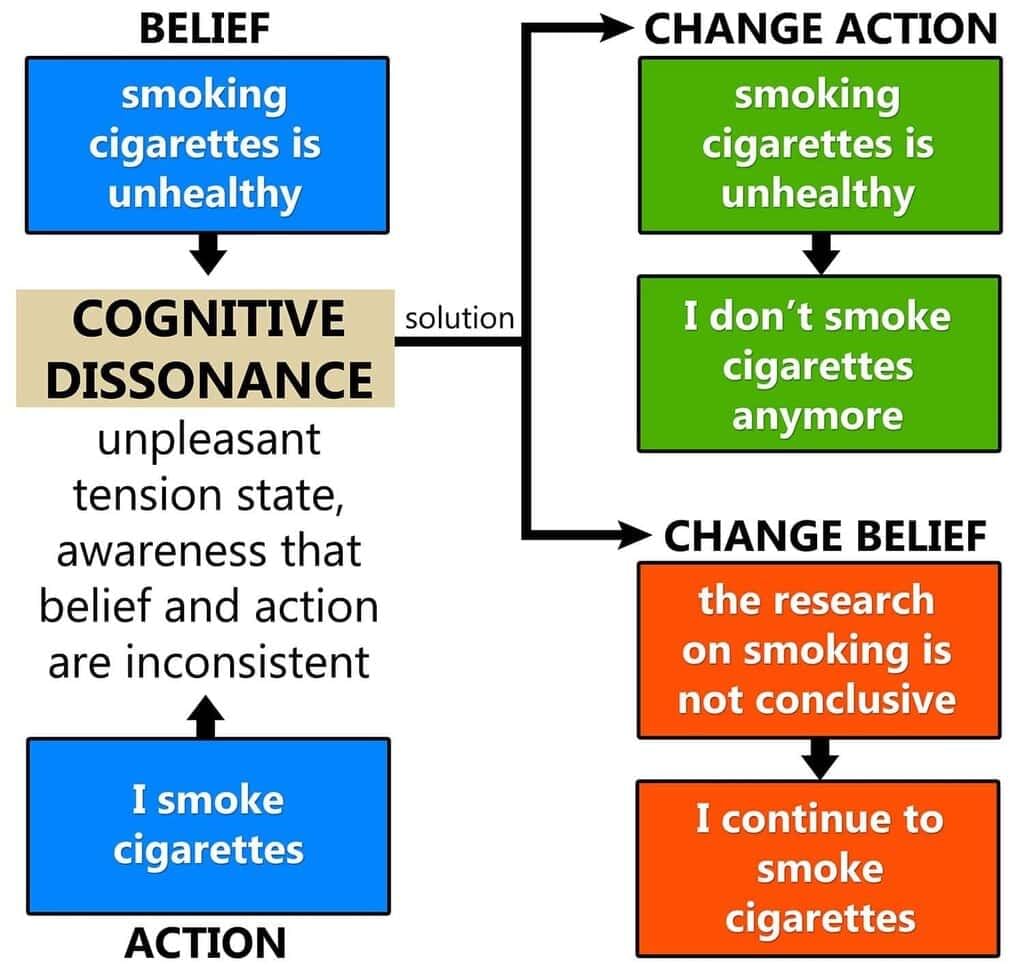
Question 6
(a) Discuss the signal detection theory (SDT) with reference to perceptual vigilance task performance.
Ans: Signal Detection Theory (SDT) is a psychological framework used to explain how individuals detect weak signals amid background noise. It emphasizes that detection is not only a sensory process but also influenced by cognitive and decision-making factors.
In the context of perceptual vigilance, SDT helps explain how attention, motivation, and expectations influence one’s ability to detect critical signals in complex environments.
Key components of SDT:
- Hit: Correctly identifying a present signal.
- Miss: Failing to detect a present signal.
- False Alarm: Detecting a signal that isn’t there.
- Correct Rejection: Correctly identifying the absence of a signal.
Two key parameters:
- Sensitivity (d'): Ability to distinguish signal from noise.
- Response criterion (β): Decision threshold influenced by motivation, risk tolerance, or consequences of errors.
In perceptual vigilance tasks (e.g., air traffic control, military radar monitoring), individuals must sustain attention to detect rare but important signals. High motivation, fatigue, or task difficulty can shift the response criterion, leading to either conservative (misses) or liberal (false alarms) decisions.
Research support:
- Studies show that fatigue reduces d', making it harder to distinguish signal from noise.
- Vigilance tasks demonstrate that with time-on-task, both sensitivity and decision accuracy decline—a phenomenon called vigilance decrement.
In real-world applications like driving or surveillance, SDT aids in designing alert systems and training programs to improve perceptual performance and reduce human error.
(b) Does punishment work in all situations? Discuss the pros and cons of punishment.
Ans: Punishment is a technique used to reduce undesirable behaviors by introducing an aversive consequence or removing a rewarding stimulus. While it can be effective in specific contexts, it does not work uniformly across all situations.
Pros of punishment:
- Immediate suppression of behavior: Especially in dangerous or disruptive situations.
- Quick feedback: Allows individuals to learn the consequences of their actions.
- Boundary setting: Establishes social or organizational norms.
Cons of punishment:
- Temporary effects: Behavior may resume once punishment ends.
- Avoidance learning: Individuals may avoid the punisher rather than the behavior.
- Aggression and fear: Physical or verbal punishment may model aggression or lead to emotional harm.
- Undermines intrinsic motivation: Especially in children and students.
Effectiveness depends on:
- Timing: Immediate punishment is more effective than delayed.
- Consistency: Inconsistent punishment reduces learning.
- Severity: Mild, predictable punishment is better than extreme, erratic ones.
- Alternatives: If no alternative behavior is taught, punishment may fail.
Indian studies (e.g., in school settings) suggest that positive reinforcement, combined with mild disciplinary action, produces better long-term behavior change than harsh punishment.
In behavioral therapy, token economies and time-outs are preferred over punishment for modifying behavior constructively.
Thus, punishment can work under controlled, thoughtful use, but overreliance without reinforcement or guidance may cause more harm than benefit.
(c) Is reconstructed memory accurate? Describe the process of reconstruction, citing research evidence.
Ans: Memory is not a perfect recording but a constructive process. The concept of reconstructed memory refers to the idea that we actively piece together memories based on fragments, prior knowledge, and contextual cues, which may lead to distortions.
Process of reconstruction involves:
- Encoding: Information is selectively stored based on attention and interpretation.
- Storage: Memory traces may degrade over time or integrate with new information.
- Retrieval: Reconstruction happens when one attempts to recall, often filling gaps with schemas, expectations, or external suggestions.
Research evidence:
- Bartlett (1932) demonstrated that participants altered Native American stories (“War of the Ghosts”) to fit their cultural schemas. This showed that memory is influenced by prior beliefs and expectations.
- Elizabeth Loftus’s experiments on eyewitness testimony highlighted how leading questions (e.g., “smashed” vs. “hit”) can alter the recollection of events, even implanting false memories.
- Misinformation effect: Introduction of misleading post-event information can distort original memory.
Factors influencing reconstructed memory:
- Suggestibility: High in children or under stress.
- Confidence: Often unrelated to accuracy.
- Source confusion: Mixing imagined events with actual experiences.
In real-life contexts like legal testimony, this has serious implications. Courts now use cognitive interview techniques to minimize reconstruction errors.
Thus, while memory serves adaptive purposes, reconstructed memory is not always accurate and can be influenced by internal and external factors.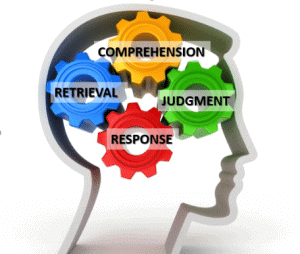
Question 7
(a) Distinguish between psychoanalytic and humanistic approaches to personality. Discuss in detail the recent developments in the applications of these approaches.
Ans : The psychoanalytic approach, developed by Freud, focuses on unconscious motives, early childhood experiences, and inner conflicts as determinants of personality. It emphasizes structures like the id, ego, and superego, along with defense mechanisms and psychosexual stages.
In contrast, the humanistic approach, led by Rogers and Maslow, emphasizes conscious experience, personal growth, self-actualization, and free will. It views individuals as inherently good and motivated to reach their fullest potential.
Major distinctions:
View of Human Nature: Psychoanalysis sees humans as driven by base instincts; humanism sees them as inherently good and growth-oriented.
Determinism vs. Free Will: Psychoanalysis leans toward psychic determinism; humanism promotes autonomy.
Focus: Psychoanalysis focuses on pathology; humanism focuses on wellness and potential.
Methodology: Psychoanalysis uses in-depth case studies and dream analysis; humanism employs qualitative methods like interviews and self-reports.
Recent Developments in Applications:
Psychoanalytic Therapy Today: Expanded into object relations theory and attachment-based therapy. Modern psychodynamic therapy is shorter and focuses on relational patterns, used in treating personality disorders and trauma.
Humanistic Applications: Client-Centered Therapy is used in counseling, education, and healthcare. Positive psychology, influenced by humanistic ideals, now focuses on strengths, well-being, and flourishing.
Integrative Models: Many modern therapeutic approaches, like existential-humanistic therapy and mindfulness-based therapies, integrate elements of both traditions.
Thus, both approaches, though fundamentally different, have evolved and found relevance in modern psychological practices, especially in therapy, coaching, and holistic well-being programs.
(b) Citing relevant examples, explain how intrinsic and extrinsic motivation differ. Referring to relevant studies, describe the factors influencing intrinsic motivation.
Ans: Intrinsic motivation refers to engaging in activities for their own sake, driven by internal rewards like interest, curiosity, or personal satisfaction. Extrinsic motivation, on the other hand, involves behavior driven by external rewards such as money, grades, or praise.
Example:
- A student learning music out of love for art is intrinsically motivated.
- A student studying only to secure a high-paying job is extrinsically motivated.
Key Differences:
- Origin: Intrinsic arises from within; extrinsic comes from external stimuli.
- Outcome focus: Intrinsic is task-focused; extrinsic is reward-focused.
- Sustainability: Intrinsic motivation tends to last longer and leads to deeper engagement.
Factors influencing intrinsic motivation:
Autonomy: People are more motivated when they feel in control. (Deci & Ryan, 1985 – Self-Determination Theory).
Competence: Feeling effective in tasks boosts intrinsic interest.
Relatedness: Positive social connections support motivation.
Task Enjoyment: When the activity itself is engaging or fun.
Goal Orientation: Mastery goals enhance intrinsic drive.
Research Evidence:
- Lepper, Greene, & Nisbett (1973): Overjustification effect – children who were rewarded for drawing later showed less interest, showing how external rewards can undermine intrinsic motivation.
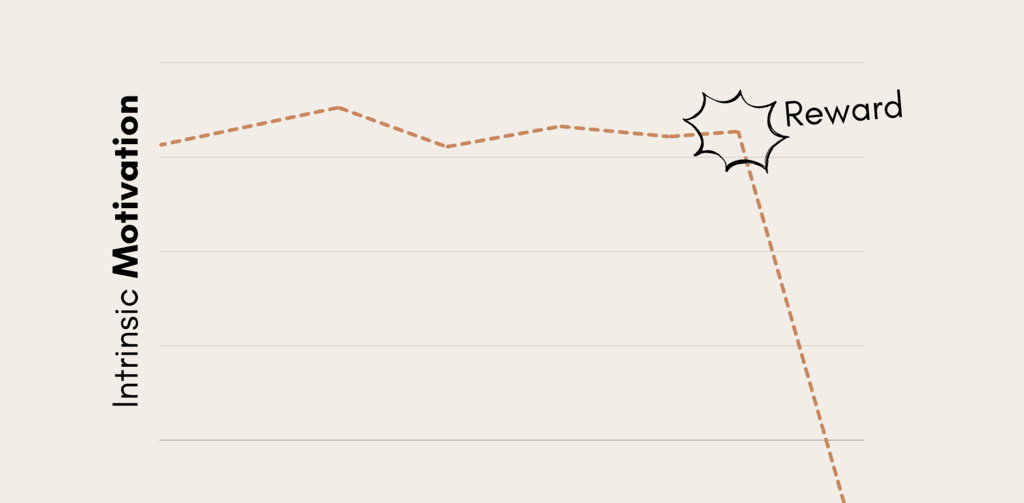
- Deci’s studies showed that autonomy-supportive environments foster greater motivation than controlling ones.
Thus, intrinsic motivation is more beneficial for sustained engagement and personal satisfaction. Educational and workplace settings now focus on fostering intrinsic motivation through autonomy and meaningful tasks.
(c) Discuss the functions of REM sleep and major theories of dreaming.
Ans: REM (Rapid Eye Movement) sleep is a unique phase of the sleep cycle characterized by rapid eye movements, vivid dreams, and muscle atonia. It is crucial for mental and emotional functioning.
Functions of REM sleep:
Memory Consolidation: Especially procedural and emotional memories. Studies show improved learning after REM-rich sleep.
Emotional Regulation: REM sleep helps in processing intense emotions, reducing stress.
Brain Development: Especially in infants, who spend more time in REM.
Creativity: REM is linked to enhanced problem-solving and creative insight.
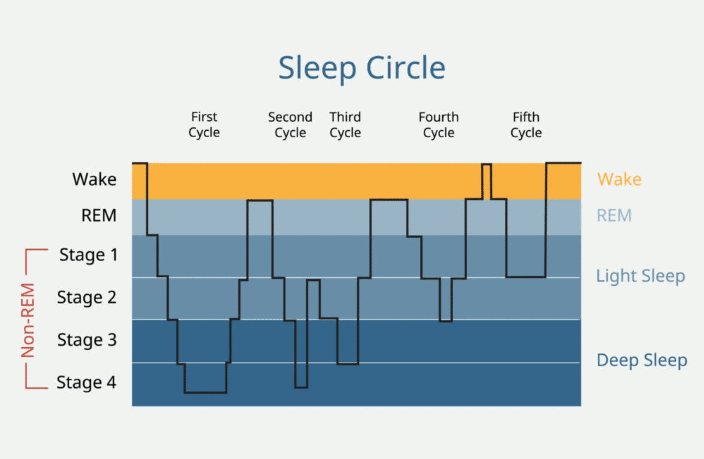
Major Theories of Dreaming:
Freud’s Psychoanalytic Theory: Dreams as wish fulfillment; unconscious desires expressed in symbolic form. However, criticized for lack of scientific validity.
Activation-Synthesis Theory (Hobson & McCarley, 1977): Dreams result from brain activation during REM. The brain tries to make sense of random neural firing. Dreams are thus “synthesized” stories.
Information-Processing Theory: Dreams help in sorting, consolidating, and integrating day-to-day experiences into memory systems.
Neurocognitive Theory (Domhoff): Dreams reflect personal concerns, social and emotional concepts. Dream content is shaped by waking life.
Threat Simulation Theory (Revonsuo): Dreams simulate threatening events, allowing for rehearsal of survival strategies.
Current research using neuroimaging has shown that amygdala and limbic regions are highly active during REM, linking dreams to emotion and memory.
Thus, REM sleep and dreaming are not random phenomena but serve adaptive functions related to cognition, emotion, and mental health.
Question 8
(a) How do Skinner and Chomsky differ in their approach to language development? Also, discuss the processes and outcomes of bilingualism and multilingualism in Indian context.
Ans: B.F. Skinner, a behaviorist, explained language development through operant conditioning. He believed that children learn language through imitation, reinforcement, and shaping. For example, when a child says "mama" and receives praise or attention, the behavior is reinforced.
In contrast, Noam Chomsky criticized Skinner’s model for failing to explain how children produce novel sentences they have never heard before. He proposed the nativist theory, emphasizing the Language Acquisition Device (LAD)—an innate biological mechanism that enables humans to acquire language. He introduced the idea of universal grammar, suggesting that all human languages share common structures.
Key differences:
- Skinner: Language is learned through environment and reinforcement.
- Chomsky: Language is innate, with minimal environmental input.
- Skinner’s model is empirical but limited in scope.
- Chomsky’s model is theoretical but explains creativity in language.
Bilingualism and Multilingualism in India:India is inherently multilingual, with people commonly fluent in two or more languages, such as Hindi, English, and regional tongues.
Processes:
- Simultaneous bilingualism occurs when a child learns two languages from birth.
- Sequential bilingualism involves learning a second language after the first.
Outcomes:
- Cognitive advantages: Enhanced executive functioning, attentional control, and mental flexibility.
- Sociocultural benefits: Greater adaptability and broader identity formation.
- Challenges: Language interference, code-switching, and academic lag in initial years.
Research in India (e.g., by Annamalai, 2001) shows that multilingualism enhances cognitive and social development when supported by inclusive education and language policy.
Thus, understanding language from both theoretical and applied perspectives is crucial for shaping education, policy, and cognitive development in the Indian context.
(b) Critically evaluate the positive and negative effects of modern computer technology and artificial intelligence on human behaviour.
Ans: Modern computer technology and AI have significantly transformed human behavior across domains, from cognition to social interaction.
Positive Effects:
Enhanced Cognitive Functioning: Access to information, decision-making tools, and educational platforms has improved learning, memory, and problem-solving.
Efficiency and Productivity: Automation and intelligent systems streamline tasks, reduce human error, and boost output in industries and services.
Assistive Technology: AI tools aid persons with disabilities, such as speech-to-text systems, visual recognition, and prosthetic enhancements.
Virtual Therapy: Use of AI in CBT (Cognitive Behavioral Therapy) chatbots and mental health apps improves accessibility to psychological care.
Negative Effects:
Reduced Attention Span: Constant digital engagement can lead to fragmented thinking and difficulties in sustained attention.
Digital Dependency: Over-reliance on technology may reduce self-initiated cognitive effort (e.g., remembering phone numbers or directions).
Social Isolation: Online communication can decrease face-to-face interaction, leading to loneliness and reduced emotional empathy.
Job Displacement Anxiety: Fear of automation replacing jobs leads to stress and uncertainty.
Research Evidence:
Studies show prolonged screen time is linked to increased anxiety and sleep disturbances.
However, cognitive training via digital tools has improved executive functioning in older adults (Bavelier et al., 2010).
In conclusion, the impact of technology is bidirectional—offering both unprecedented growth and emerging psychological challenges. Managing this balance through digital literacy, ethical design, and mindful use is essential.
(c) What advice would you give to a civil servant to reduce prejudice and discrimination in Indian society? Discuss.
Ans: Civil servants play a critical role in shaping social attitudes and ensuring justice. To reduce prejudice and discrimination, the following strategies can be recommended:
Promote Intergroup Contact: Following Allport’s Contact Hypothesis, structured intergroup interaction under cooperative and equal-status conditions can reduce stereotypes. For example, organizing inclusive community programs and cultural exchanges.
Sensitization and Training: Conduct regular diversity training and implicit bias workshops for government employees and law enforcement. Awareness of unconscious biases helps mitigate discriminatory practices.
Representation and Affirmative Action: Ensure diverse representation in decision-making bodies and implement affirmative policies in education and employment to create inclusive environments.
Legal Enforcement: Strictly enforce anti-discrimination laws (e.g., SC/ST (Prevention of Atrocities) Act) and ensure timely redressal mechanisms for victims of bias.
Value-Based Education: Promote civic education in schools and colleges emphasizing equality, pluralism, and empathy. Civil servants can collaborate with education departments to reform curricula.
Encourage Dialogue and Media Literacy: Use mass media campaigns to challenge stereotypes and misinformation. Promote responsible media reporting that avoids reinforcing group biases.
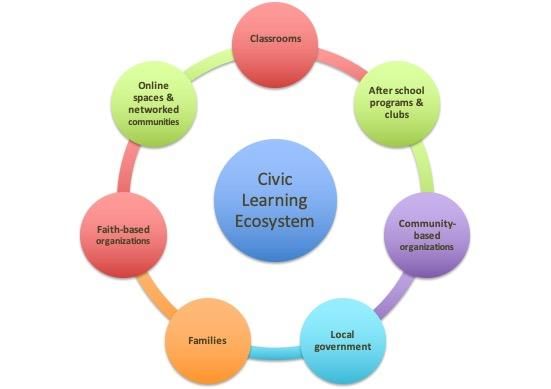
Example: The “Ek Bharat, Shreshtha Bharat” initiative fosters national integration by pairing states to promote mutual understanding through cultural exchange.
By adopting these evidence-based strategies, civil servants can act as change agents, fostering an equitable society grounded in dignity, justice, and harmony.
|
160 videos|215 docs
|
FAQs on UPSC Mains Answer PYQ 2024: Psychology Paper 1 (Section- B) - Psychology for UPSC Optional (Notes)
| 1. What is the significance of Psychology Paper 1 in the UPSC Mains examination? |  |
| 2. How can candidates effectively prepare for Psychology Paper 1 for the UPSC Mains? |  |
| 3. What topics are generally included in the Psychology Paper 1 syllabus for UPSC Mains? |  |
| 4. Are there any recommended books or resources for studying Psychology for UPSC Mains? |  |
| 5. How important are previous years' question papers for preparing for Psychology Paper 1? |  |





















